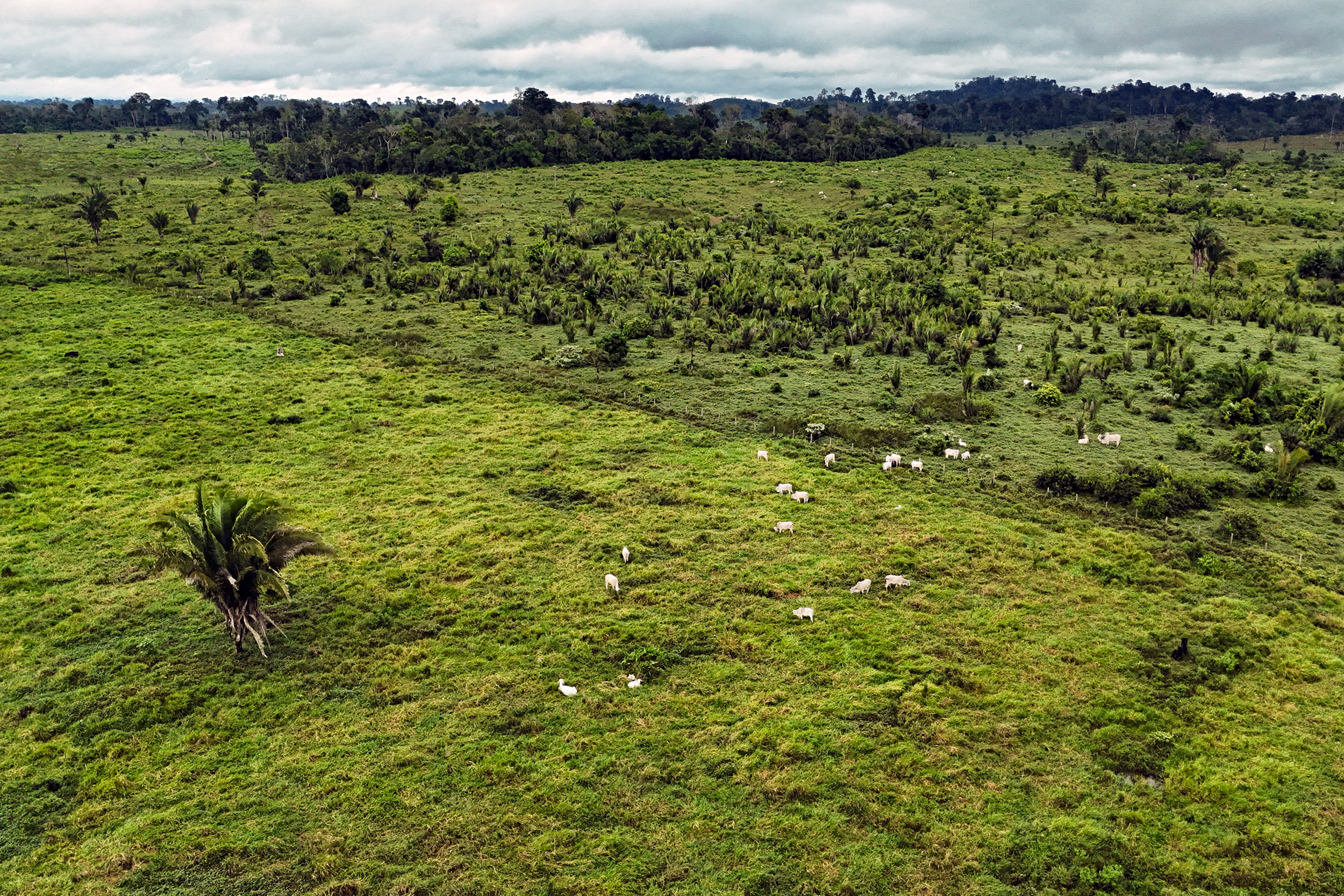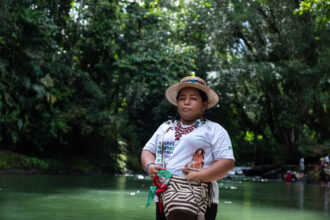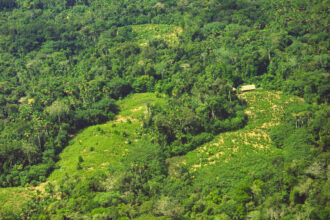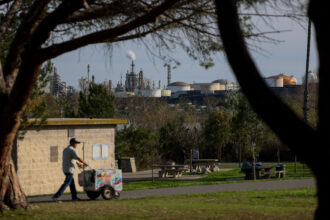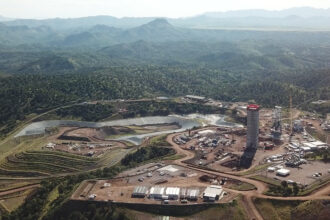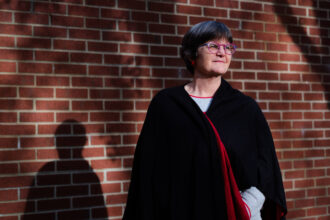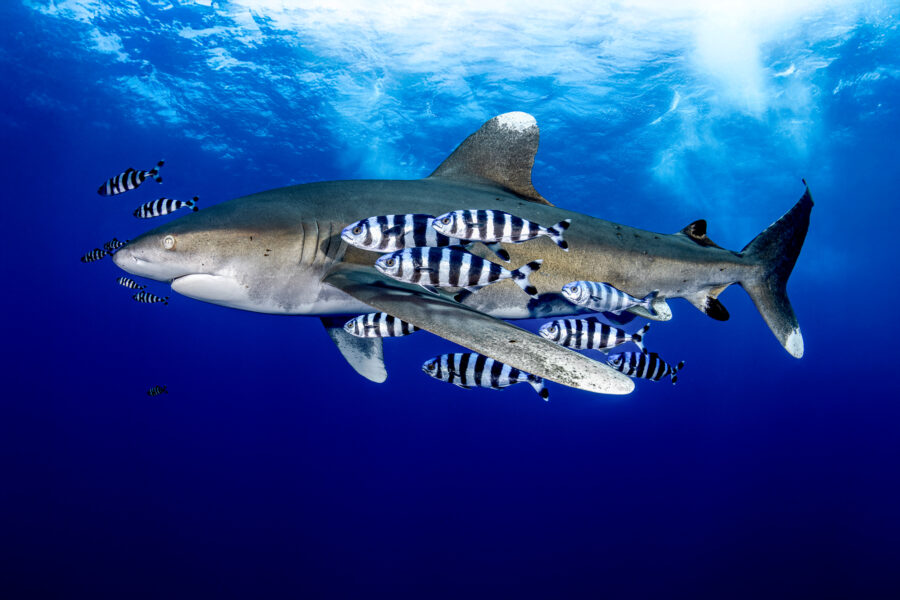From our collaborating partner Living on Earth, public radio’s environmental news magazine, an interview by Steve Curwood and Jenni Doering with Michael Coe, a senior scientist and tropical forest expert at the Woodwell Climate Research Center.
For the first time in 30 years, Brazil was the host of the U.N. climate treaty negotiations known this year as COP30. And it’s no surprise that the country with most of the Amazon tropical rainforest led a major advance for forests and their Indigenous inhabitants.
There have been other attempts to incentivize protecting forests, including carbon offsets, but these have been vulnerable to fraud and have had limited success.
Through the COP, Brazil, Norway and the Netherlands seeded a new fund of $5.5 billion (with ambitions to grow it to $125 billion) with guarantees for investors that will send its profits to countries with documented forest preservation, including some cash going directly to Indigenous and local populations.
Michael Coe is a senior scientist and tropical forest expert at the Woodwell Climate Research Center who was at the COP in Belém, Brazil. This interview has been edited for length and clarity.
JENNI DOERING: Can you give us a sense of the state of the world’s forests, and especially tropical forests, at this moment? Where are they, and just how much of them have we lost?
MICHAEL COE: There are three big blocks of tropical forest, in South America, Southeast Asia and the Congo. Over the last few decades, a tremendous amount of those have been lost. The greatest amount of loss is in Southeast Asia, where something like 40 percent have been removed. In South America, it’s something like 17 percent, and the Congo, about 20 percent. Most of that, of course, is for agriculture.
STEVE CURWOOD: Tell us why tropical forests are so crucial. What’s their role in the climate system and beyond?
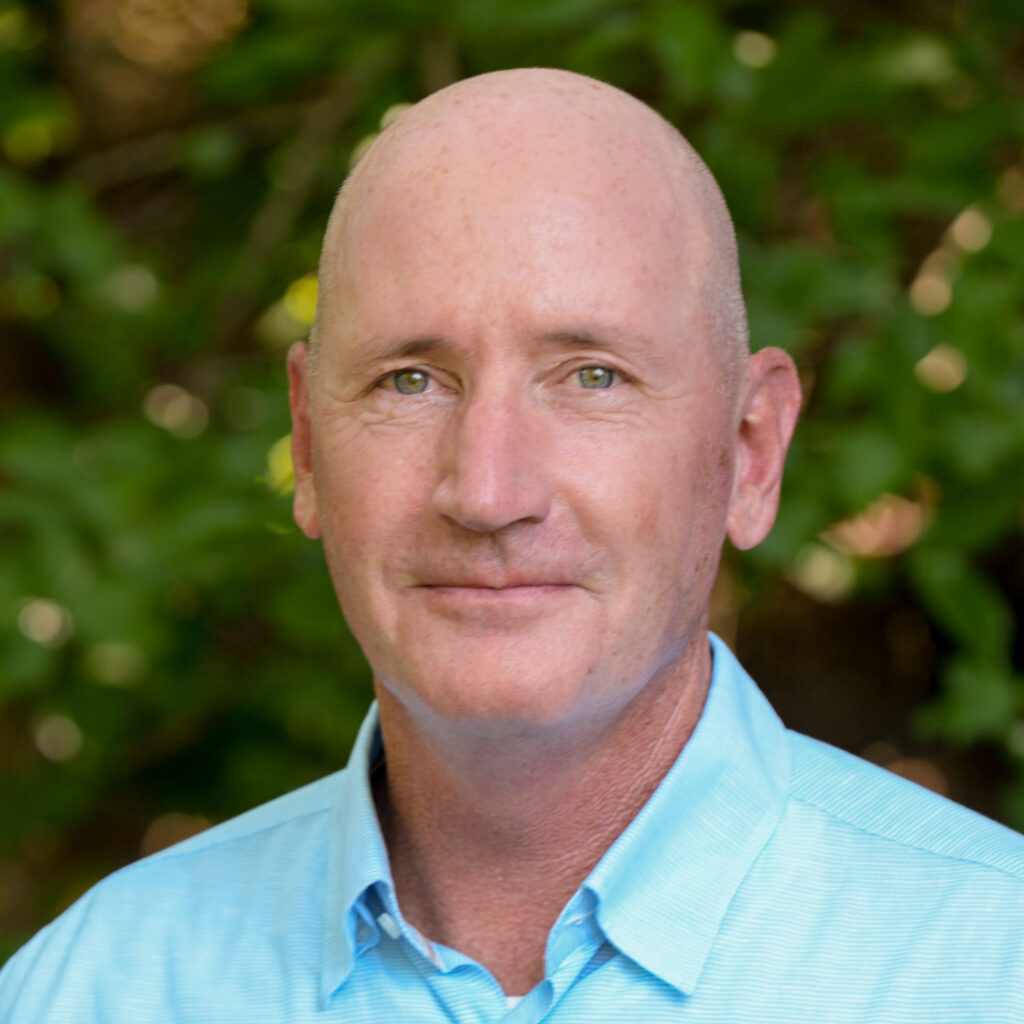
COE: We think mostly about them in terms of their carbon. They have an enormous amount of carbon in them, so when you deforest, you’re emitting a great deal. But what I have been interested in, and what’s really fascinating, is that that’s not the only reason they’re great for climate. Another big part is they are just giant air conditioners. What they do is pull water out of the soil from very deep down, and they evaporate it. When they’re photosynthesizing, they’re evaporating water. And when you evaporate water, that’s energy. You’re taking heat, and you’re converting water to vapor, and you’re carting it away. They cool the land surface enormously.
We see this throughout the tropics. If you deforest a parcel of land, it will almost immediately be something like 5 degrees Celsius warmer than the forest right next door, and that’s on an annual average. If you walk out of the forest in the dry season onto an open field that is fallow, it is 10 degrees Celsius hotter, 15 degrees Celsius hotter. It is just astounding, and that’s not just a local effect, it has global implications.
DOERING: It’s almost like the forest is able to sweat, like we do.
COE: When it’s photosynthesizing, it has to use that water to cool itself off; it’s pulling in sunlight and getting hot. So that’s exactly what it does.
CURWOOD: How much are deforestation and the degradation of forest adding to the climate emergency every year? Compared to the burning of fossil fuels, what percentage of the problem are we looking at here?
COE: It’s big. When you say tropical forest, it might be, say, 10 percent of all emissions, human emissions. If you’re talking all the forests on the planet, probably 20 percent of all emissions. So deforestation is a big number. For many nations, it’s by far the largest. China’s number one in emissions. The U.S. is number two. Deforestation is number three.
CURWOOD: We talk about the carbon that it sequesters, but what about when you cut those trees down? How much carbon does it stop taking out of the air? What’s the loss there and the effect on the climate?
COE: That’s a big number. You’re talking about something like 15 percent of human emissions that are being pulled back out by forests, by tropical forests. So yeah, it’s a double loss. You’re shutting off this ability to pull CO2 out of the atmosphere, and then you’re just putting more back in.
CURWOOD: At the end of the day, you have a 20 percent loss by cutting them down, and then you have another 20 percent loss of the forest pulling it out of the atmosphere?
COE: More or less, yes. You’re shutting off yo`ur ability to pull it out, and you’re emitting. This is why some studies have shown that portions in the Amazon are now net emitters of CO2. Instead of net pulling it out, they’re actually emitting more, and that’s because of deforestation and the fires that are occurring.
DOERING: We’ve been referring to deforestation, and also to forest degradation. What does that actually mean?
COE: Forest degradation is when you still have the forest in place, but you’re degrading how much carbon it has in it—basically, how many trees.
CURWOOD: What leads to forests being so degraded, even if they’re not completely cut down?
COE: The number-one source of degradation in the tropics is fire. And the thing about fire—I can say this for sure—in the Amazon and in Congo, in these dense, wet forests, fire is not natural. It doesn’t occur like it does in the boreal forests, where lightning strikes and a huge fire occurs. That does not occur in the tropics. These are fires lit by people.
They’re burning pastures to rejuvenate the grasses. They’re doing slash and burn so they can open land to plant rice or whatever. So in many ways, it is a problem that can be addressed. We know it’s being caused by humans. And this is one of the things we try to work on a lot in Brazil in particular, is how do we reduce fires? The land is chopped up into chunks, and those edges now are really susceptible to fire, and fire goes in there and takes out a large fraction. Once you’ve done that, it’s a cycle. Now there’s more sunlight coming in, it gets hotter, it’s more susceptible to fire. It’s a pretty slippery slope once you get started.
CURWOOD: To what extent are those fires related to the warming planet itself?
COE: A great deal. Last year was an incredible example. It was an El Niño year, which meant it was much hotter and drier. When fires did start, they got huge. And it looks like last year, degradation committed as much CO2 to the atmosphere as deforestation did. In most years, degradation’s a significant number, but it’s not as big as deforestation. It just essentially doubled the amount of CO2 emitted last year.
DOERING: Just how important are tropical forests to the Earth’s temperature? If we cut down all tropical forests, what do you think would happen to the global average temperature?
COE: That’s something we’ve been trying to quantify for a very long time. Recently, we did some experiments and we found that if you cut down all the tropical forests, then the global temperature would probably rise by about 1 degree Celsius, which is a large number.
Half of that 1 degree would be from all the emissions, but the other half would be from that “air conditioner” we broke. Those forests, they’re an air conditioner, and they cool the planet. What’s important here also to think about is OK, that means, if we deforest 10 percent, we raise the temperature by .1 degrees Celsius, which we really can’t afford.
These forests are extremely important for our stable climate. This is one of the things we keep saying, that they are going to mitigate some of the worst impacts of climate change occurring because of fossil fuels, and we are eliminating that incredible gift.
CURWOOD: At COP30, there’s been a proposal led by Brazil for this Tropical Forests Forever Facility to pay to keep the trees. This is different from the question of money for carbon offsets. In this case … if a country shows that it hasn’t cut its trees, it will get some money. How can you police such a thing?
COE: It’s going to depend on satellite observations of forest cover, because it has to be applied uniformly everywhere. We can’t have independent agencies for every nation reporting. What we have to have is one tool that will tell us, and we all have to agree that that works.
DOERING: That seems like it could get tricky in terms of, what’s the definition of healthy forest, and how do you tell if a forest has been slightly degraded, and then it starts being degraded more. Where’s that tipping point?
COE: That is tricky. This TFFF, I think it’s a great idea. The devil will be in the details. And those details have not been worked out. Those decisions on what constitutes full forest still have not been made.
DOERING: What’s in it for the people who are putting in money up front for this—what’s the payout that they’re going to receive?
COE: It’s a fund, so it’s going to be invested. From my understanding, that means that there’s a certain rate that goes to the investors, and there’s a certain amount that is set aside to go to nations to pay for their forest. If you’re not buying a credit, other players, other investors can get involved—say, pension funds or insurance companies who aren’t necessarily interested in offsetting carbon, they’re interested in making a profit. It brings other actors into the forest conservation realm.
This story is funded by readers like you.
Our nonprofit newsroom provides award-winning climate coverage free of charge and advertising. We rely on donations from readers like you to keep going. Please donate now to support our work.
Donate NowCURWOOD: A unique aspect of this is it’s talking about some percentage of these funds being paid directly to Indigenous peoples and local communities. How big of a deal is this?
COE: That’s a big deal. Up to this point, it’s been very difficult to find ways to include Indigenous groups in the classic carbon credits. This whole idea is very different. Instead of buying a credit, you’re investing in a fund, and part of the profit of that fund goes to these nations for keeping forests in place, and part of that goes to people on the ground.
CURWOOD: This tropical forest fund is in its early stages. There seems to be $5 billion or maybe $7 billion committed at a seed level. How excited are you about the possibilities of this fund?
COE: I’m actually very excited. This is a significant amount of money. I think that the way it’s structured will attract more investors. There’s a real possibility that this could fund significant conservation.
CURWOOD: You’re at COP30 right now. You’ve been going since the meeting in Copenhagen back in 2009, and you’ve been in the business of climate research for a long time. What has the mood been like this year at the summit, and how are you feeling about the future?
COE: For me, the mood here is wonderful. We’ve been trying for years to get forests, tropical forests, in particular, as part of the agenda. Here in Brazil, they’re really front and center. Forests are clearly an important part of our strategy.
In terms of the future, it’s a long slog we’re on. We have to keep trying, and we have to keep working and trying. This climate problem is not going to end tomorrow, and so these negotiations, these meetings, are extremely important.
About This Story
Perhaps you noticed: This story, like all the news we publish, is free to read. That’s because Inside Climate News is a 501c3 nonprofit organization. We do not charge a subscription fee, lock our news behind a paywall, or clutter our website with ads. We make our news on climate and the environment freely available to you and anyone who wants it.
That’s not all. We also share our news for free with scores of other media organizations around the country. Many of them can’t afford to do environmental journalism of their own. We’ve built bureaus from coast to coast to report local stories, collaborate with local newsrooms and co-publish articles so that this vital work is shared as widely as possible.
Two of us launched ICN in 2007. Six years later we earned a Pulitzer Prize for National Reporting, and now we run the oldest and largest dedicated climate newsroom in the nation. We tell the story in all its complexity. We hold polluters accountable. We expose environmental injustice. We debunk misinformation. We scrutinize solutions and inspire action.
Donations from readers like you fund every aspect of what we do. If you don’t already, will you support our ongoing work, our reporting on the biggest crisis facing our planet, and help us reach even more readers in more places?
Please take a moment to make a tax-deductible donation. Every one of them makes a difference.
Thank you,

